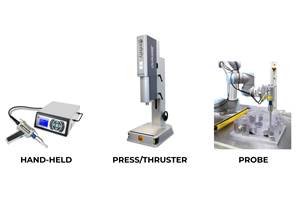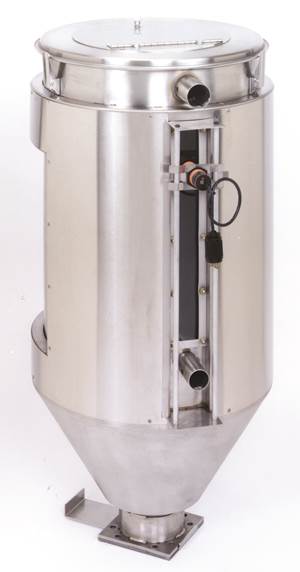What Percentage of Barrel Capacity Should Your Shot Size Be?
The answer combines both experience and science, and it may be one of those molding details that gets overlooked but could be stealing a chunk of your profits.
The last two columns covered calculating shot size and pasticating capacity and also dealt with using a given percentage of barrel capacity per shot. These articles generated a few emails with questions concerning how much of the barrel or shot-size capacity should be used. Some felt that this is determined by experience—with little science involved—and most seemed to think it is guesswork. Actually, it’s a combination of both experience and science.
My recommendation is that your process should take somewhere between 25% and 75% of the barrel or shot capacity. So what is the rationale and science (if any) behind this advice?
If you’re using less than 25% of the barrel capacity, the material’s residence time will probably be too long and you’ll likely see resin or color degradation during production. This begs the question: What is the residence time for any percent of the barrel used? My procedure is this: As you are starting up and have set up the rough shot size, put a few granules of different color into the feed throat—best if it’s the same, or at least a compatible, resin type. Then count how many shots it takes until you see the different color come out. Take the number of shots and multiply by the cycle time and you have an idea of the residence time. Some people try to determine residence time purley by calculating with certain equations, but I have not seen good results with that approach.
In addition, if the different color is the same as or compatible with the resin, look at the parts made with that color. If the different color is streaky, the screw is not providing uniformly melted polymer. You can expect lower physical properties, poor weldlines, warpage, inconsistent dimensions, color variations, and a host of other profit-killing issues. On the other hand, if the color comes out as a pastel or mostly blended with the resin, you have evidence the screw is providing good mixing and you have a uniformly melted shot. But I digress…
Another reason you want to use more than 25% of the barrel is that the longer stroke allows for better velocity control. One of the premises of “Scientific Molding” is that you must keep fill time the same; it helps stabilize viscosity and allows production of more consistent parts. It is easier for the machine to control velocity over a longer stroke than a shorter stoke.
However, you don’t want to use more than 75% of the barrel capacity either, or you’ll most likely have problems with melt uniformity. Remember that as the screw turns and backs up to make the shot, the feed section of the screw actually becomes shorter from the point of view of the pellets. Typically the feed section of a screw is half the screw flight length. With large shots a good portion of the feed section winds up behind the feed throat as the pellets fill the flights. That leaves only a few flights to prepare the resin for the transition or compression zone.
This is a problem because in the feed section granules start to compress, and thermal heating is provided via the rear zone. You may get by when running amorphous resins, as they melt gradually, like butter. But semi-crystalline resins melt differently, more like ice: They stay hard until they reach their melting temperature and then melt.
With only a few flights for preparation, semi-crystalline resins present severe problems to the transition zone. You can get screw slippage in this barrel section when the screw does not back up as it rotates. You’ll also foul up the friction of the granules on the barrel wall and lose a major mechanism for driving energy into the pellets. In addition, you have to factor in that melting most semi-crystalline resins requires nearly twice the BTUs (energy) of melting amorphous materials.
For example, amorphous ABS takes about 150 BTU/lb to bring it from room temperature to melt temperature. The same amount of polyethylene will take about 325 BTU/lb, more than double the energy required for melting. This explains why some PE molders see flights eroded or even completely missing when they pull screws. In addition you now can also explain why you have unmelt in your parts: The transition or melting zone of the screw just could not generate the energy required to get the job done. The metering zone does not finish melting; it is merely a pump.
The process has to factor in screw slippage, room for the non-return valve to seat, and some decompression after screw rotate. These factors are hard to predict or calculate, so if you go over 75% shot size you can expect trouble. Also, large shots require longer screw rotate times that eat into profit margins.
So pay attention to the percentage of your barrel capacity your jobs are using. It may be one of those molding details that gets overlooked but it could be stealing a chunk of your profits.
Related Content
The Effects of Time on Polymers
Last month we briefly discussed the influence of temperature on the mechanical properties of polymers and reviewed some of the structural considerations that govern these effects.
Read MoreA Guide to Ultrasonic Welding Controls
Ultrasonic welding today is a sophisticated process that offers numerous features for precise control. Choosing from among all these options can be daunting; but this guide will help you make sense of your control features so you can approach your next welding project with the confidence of getting good results.
Read MoreThe Effects of Stress on Polymers
Previously we have discussed the effects of temperature and time on the long-term behavior of polymers. Now let's take a look at stress.
Read MoreBozzelli’s Guide To Specifying a Dryer
Here's a list of 17 things to do when looking for new drying equipment.
Read MoreRead Next
Lead the Conversation, Change the Conversation
Coverage of single-use plastics can be both misleading and demoralizing. Here are 10 tips for changing the perception of the plastics industry at your company and in your community.
Read MorePeople 4.0 – How to Get Buy-In from Your Staff for Industry 4.0 Systems
Implementing a production monitoring system as the foundation of a ‘smart factory’ is about integrating people with new technology as much as it is about integrating machines and computers. Here are tips from a company that has gone through the process.
Read More
.jpg;width=70;height=70;mode=crop)












